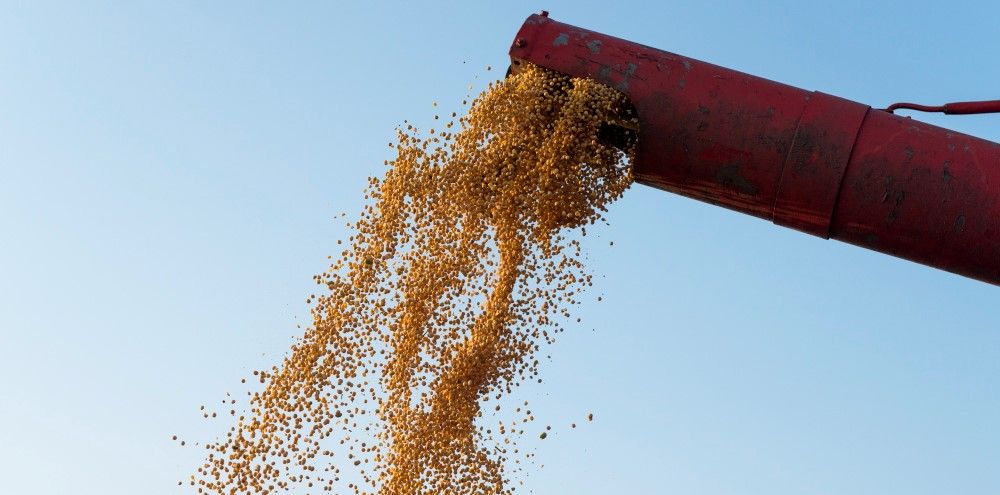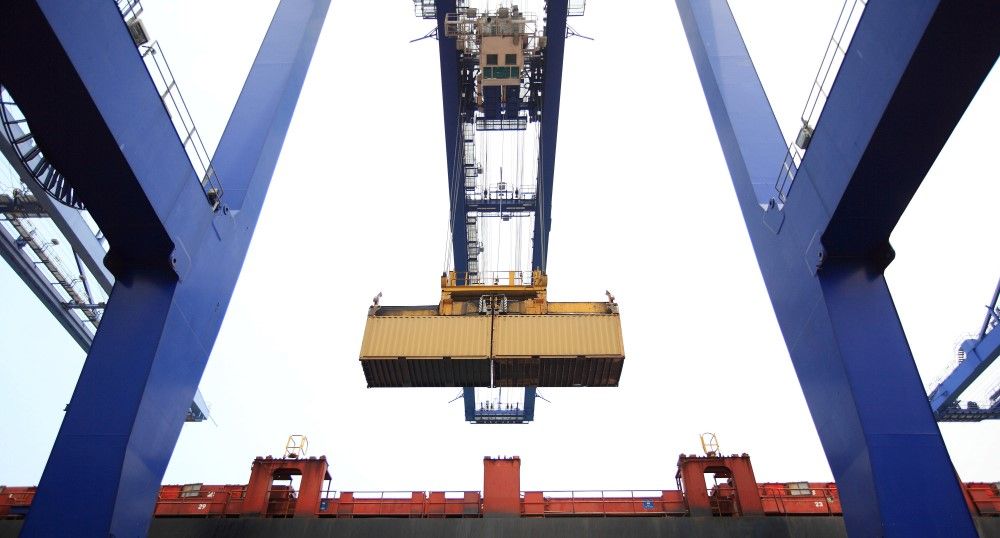A war in Europe! With a nuclear power! This could change everything and possibly collapse the global economy!
Well maybe, but maybe not. Here’s a look at where the war in Ukraine has had an economic impact and the surprising places where it hasn’t.
Economic Downturn?
In general, the global economy has suffered as a result of the Ukraine/Russia war. However, initial beliefs that the conflict would push the global economy into a long economic depression have proven unfounded, with most industrial nations such as Germany, Japan, and the US experiencing only minimal disruption.
Germany, for example, had an original forecast of a 1.3% GDP contraction for 2022, which after the invasion was revised only slightly higher to 2%. Most other Western nations also experienced minimal change, while some nations, such as Saudi Arabia (oil producer) and Argentina and Brazil (grain producers) had economic forecasts which clearly benefitted from the conflict.

Only the Ukrainian and Russian economies were significantly hit by the war, with the Economist reporting data which shows, “… that Russia will be the hardest hit among the g20. Its economy held up surprisingly well at first against Western sanctions. But by the end of 2022 the EIU reckons its pariah status will cause its economy to contract by 10%, compared with their initial assessment of 2.6% growth. Ukraine’s economy is expected to suffer an even more severe blow. The World Bank estimated in April that it will contract by 45% this year.”
Europe Moves Away from Russian Fossil Fuels
The war and the Wests sanctions on exports from Moscow quickly exposed Europe’s dependency on Russian fossil fuels for both heating and manufacturing. While during the first winter, energy prices were extremely turbulent, European industry and governments reacted by reducing consumption, boosting domestic energy output (such as renewable wind power), and switching large industrial demand from Russian natural gas to American or Norwegian liquified natural gas (LNG).
As the data shows, Russian pipeline shipments decreased throughout 2022 from 140 billion cubic metres (bcm) to 65 bcm, while expanding non-Russian sources of consumption by a total of 72 bcm, more than 80% of which came from LNG imports.

Europeans reduced their demand for natural gas by 12 percent, primarily in households and industry while power consumption remained almost steady. Allowing Europe to actually increase its reserve gas storage to 84 percent full, up from 60 percent in December 2021.
Defence Spending Increases
Since the Russian annex of Crimea many nations boosted their defence spending, however only Greece, the US, and the UK surpassed the NATO target of 2% of GDP.
Since the invasion, the goal of achieving the 2% target has been more widely accepted with Italy, Spain, Belgium, and many more all pledging it as a future budget goal. While others, like Latvia, Croatia, Poland, Lithuania, and notably those which border Russia, already meeting the 2% target.
Corporations have Left the Russian Market
Prior to the war, 216 of the Fortune Global 500 companies had a presence in the Russian market. Today that number is less than forty, as Western firms no longer wanted to be seen supporting Putin’s regime.
This means that 80% of the large corporations operating in Russia are Chinese.
Industrial Metals and Minerals
At the start of the war, one of the key fears was that raw material prices for minerals, metals, and industrial chemicals would skyrocket as both Ukraine and Russia were major exporters. Supplies of these key raw materials were further hit as the frontline shifted, destroying and damaging many iron smelting furnaces, coal mines, neon processing plants, and other industrial facilities and infrastructure.
However, as a recent report published in the Economist notes, “Prices for almost all these materials have retreated to pre-war levels and are only slightly higher for the others. Part of this is due to extended lockdowns in China that tempered demand and thereby moderated price increases. Also, global trade flows adjusted; other economies increased their production to make up for decreases in output from Russia and Ukraine, while some materials continued to flow from Russia to countries that had not put in place trade restrictions.”

Although the report does note that, “The major exception is phosphate rock, the price of which doubled between the time of the invasion and April 2023. However, its price has been rising since 2020, driven by a combination of rising demand and supply disruptions (including pandemic lockdowns and adverse weather in producing regions) to which the war in Ukraine likely contributed.”
Refugee Crisis?
The immediate impact of the Ukraine war was a refugee crisis involving 14 million people fleeing the country. Today, about 2 million have returned to their homes, but almost 12 million people have been displaced.
As a recent report by industry consultants at McKinsey & Sons notes, “All told, 58 percent of the 6.4 million refugees abroad are now living somewhere beyond Ukraine’s neighboring countries. Germany has taken in more than one million; Czech Republic, about 342,000; the United States, about 300,000; Canada, about 235,000; the United Kingdom, about 203,000; Spain, about 183,000; and Italy, about 182,000.”
While no one can be certain how many of these people will return to Ukraine peace is agreed upon, the cultural and economic impact of such a large movement of people may be significant. For example, immigrants often provide a productivity boost to the country where they have resettled.
Food Inflation Stabilising
In the weeks and months after Russia’s invasion, the price of many agricultural goods soared beyond the pandemic price hikes of 10% or 20%, to as much as 50% for essential products such as sunflower oil and wheat.

However, most prices have now stabilised with some even returning to pre-war levels. For example, the World Bank reported in August that, “The World Bank’s food price index has been relatively stable during the past seven months as declines in the prices of grains offset increases in other food items.” Adding that, “Despite the non-renewal of the Black Sea Grain Initiative and India’s export ban of non-basmati rice, the food price index is expected to average lower in 2023 compared to 2022.”
It is also worth noting that a large amount of recent food inflation has been caused by increased costs for labour, fuel for transportation, and fertilizer.
Commodity Flexibility
Perhaps the greatest indication of how the global economy has remained unmoved by the conflict in Ukraine has been the reaction of commodity markets and production.
This was shown in a recent McKinsey & Sons report which analysed 32 commodities for which “Ukraine of Russia is a major producer,” concluding that:
· In five commodities, production decreased in the Ukraine and Russia, but was compensated by other sources, increasing overall global output. Mining products like silver, asbestos, titanium, and diamonds of gem quality all exhibit this pattern.
· In eight out of the 32 goods examined, Russia and Ukraine actually increased output, producing more wheat, pig iron, and palladium in particular. In response, global production declined or remained relatively steady for these products.
· The rest of the world was unable to fill a production deficit caused by Russia and Ukraine in six commodities. Disruptions were most noticeable in this category. Examples include potash, natural gas, steel, and several minerals used primarily in the production of steel (vanadium, ferrosilicon, and iron ore).
· In 13 commodities production in the Ukraine and Russia increased, but not as much as production globally. Examples of agricultural products include oats, barley, sunflower oil, and seed meal. Other examples are crude oil, coal, aluminium, cobalt, and nickel. In such circumstances, Russia managed to raise production in accordance with global increases by finding new customers, such as in India or China.

So, while it seems that the war has been damaging to the global economy, its impact has been selective. Most economies have had minimal disruption, and some have even benefitted. For the large part, the data shows that global production and market forces have compensated for shortfalls. This has meant that food, energy, raw materials, metals, chemicals, and other commodity prices have not changed greatly following the initial price speculation and panic buying.
With the invasion coming so soon after the unprecedented turbulence of the global pandemic, forecasters were quick to predict another Great Depression. Fortunately, much of this has not come to pass. Instead, inflation is now falling, and many expect a brighter economic future over the coming months despite military analysts foreseeing a long war.
The Russian invasion came as a massive shock, but perhaps the greatest shock of all has been global economic resilience.
If you would like to read more about this topic, try: Russia Dodges Sanctions, Increases Drone Production or A New Strategy for the U.S. Military Raw Material Supply Chain
Photo credit: Freepik, jcomp, aleksanderlittlewolf, wirestock, Garry Chapple on Pixabay, & ededchechine on Freepik